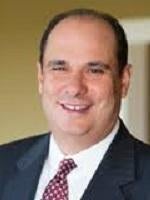Eastern District’s order aims to focus patent cases in an attempt to reduce costs.
On October 29, Chief District Judge Leonard Davis of the U.S. District Court for the Eastern District of Texas signed a general order adopting a modified version of the model order from the U.S. Court of Appeals for the Federal Circuit regarding limitations for patent claims and prior art (E.D. Tex. Model Order). The E.D. Tex. Model Order was adopted in an attempt to reduce the burden on the courts and to lower the expenses of the parties by focusing patent cases on the issues at the core of the disputes. As such, the order requires a successive narrowing of elected patent claims throughout the discovery phase of the litigation. The key deadlines and requirements of the E.D. Tex. Model Order are set forth below.
|
Deadline |
Party |
Requirement |
|
Completion of claim construction discovery (pursuant to local Patent Rule 4.4) |
Plaintiff |
Preliminary election of asserted claims with
|
|
Plaintiff’s preliminary election of asserted claims plus 14 days |
Defendant |
Preliminary election of asserted prior art with
|
|
28 days before the service of expert reports by a party with burden of proof (i.e., infringement) |
Plaintiff |
Final election of asserted claims with
|
|
Service of expert reports by a party with burden of proof (i.e., invalidity) |
Defendant |
Final election of asserted prior art with
|
|
Note: If the patent plaintiff asserts infringement of only one patent, all per-patent limits are increased by 50%. |
||
Unselected Claims
Once the initial order has been entered, and absent agreement of the parties, the numerical limits on asserted patent claims and prior art references listed above may only be modified under a demonstration of good cause. This requirement for modification follows current Federal Circuit case law and implicates the possibility of preclusion of the unselected claims.
In In re Katz Interactive Call Processing Patent Litigation,[1] the Federal Circuit approved of a district court’s procedure requiring the limitation of patent claims where the unselected claims were duplicative and did not present unique issues as to liability or damages. The Katz panel affirmed the district court’s refusal to sever and stay the case as to the unselected claims, rejecting the patentee’s argument that entering final judgment on the unselected claims violated due process. While the Federal Circuit did not directly address the preclusive effect of the final judgments on the unselected claims, the court, in a footnote, stated that “[a]lthough we accept Katz’s assertion that the final judgments could have preclusive effects in later actions brought against the same or other parties, the precise effect of the judgments in this case will necessarily have to be decided in any such later actions that may be brought.”[2] More recently, in Aspex Eyewear, Inc. v. Zenni Optical Inc.,[3] the Federal Circuit focused on the issues decided, rather than the claims asserted, in affirming the collateral estoppel of previously unasserted claims of asserted patents against the same accused products.
The assertion of different claims in a subsequent suit does not create a new “issue” to defeat preclusion.[4] Should patent plaintiffs narrow their asserted claims in response to the new E.D. Tex. Model Order, they may be estopped from reasserting those claims in subsequent litigation against the same accused products.
All other portions of the E.D. Tex. Model Order, such as deadlines, are committed to the sound discretion of the district court. For example, the proposed deadlines assume that a claim construction order is timely issued from the bench. Should a claim construction order be delayed, the parties may be required to petition the court for additional time to complete their final elections.
Implications
In short, the Eastern District of Texas is requiring parties to select a horse to ride early in a lawsuit. With the crowded docket and high costs associated with patent litigation, the E.D. Tex. Model Order attempts to benefit the parties, the bar, and the bench. The preliminary elections are timed to avoid undue expense from the briefing, arguing, hearing, and ruling on excess claim construction issues. The objective of the final elections is to lessen the costs associated with expert witnesses and trial preparation. As the E.D. Tex. Model Order is implemented by the courts, more information will become available as to whether these important goals have been achieved.




 />i
/>i

